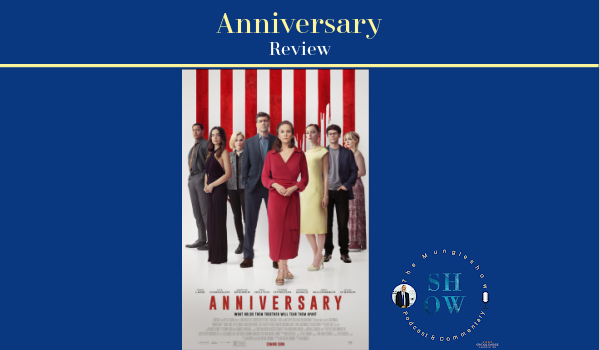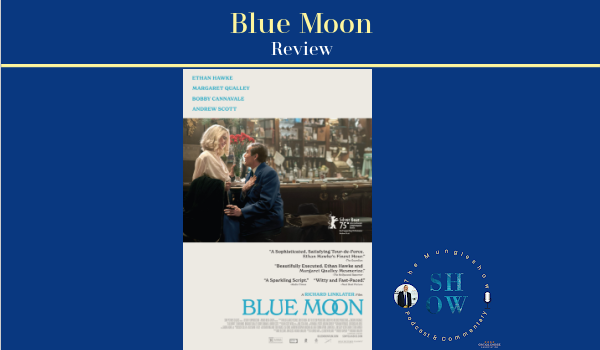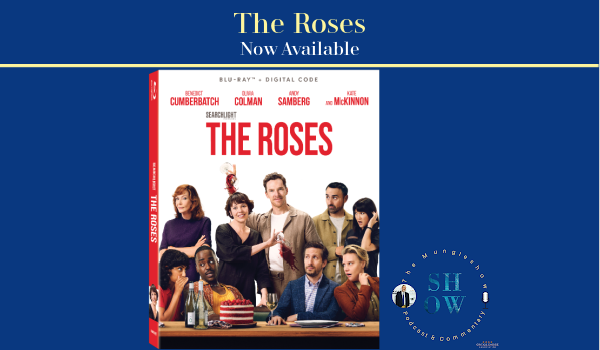Building a movie room without busting the family budget
The conversion of our upstairs den to a functioning movie room needed a crucial element; a projector screen. I had a top of the line projector and a killer receiver but if the images didn’t look stellar then it really didn’t matter. Luckily I had a ginormous wall to project the image on until I could research screens. It worked fine and I even contemplated trying to remove the texture from the wall and paint it white. But that was going to end up being time consuming, messy, and expensive. Plus if I ever move then I would have to re-texture and repaint. Just not worth it. So an actual screen was the answer. But where to start? Amazon of course!
The Options
Once I started looking I found that the options were quite vast. It can seem over whelming at first so the key is to find exactly what works for you and your room. In our case there were three things that were important. Affordability, construction, and of course how well the image looked.
Fixed Frame vs. Pull Down. My first thought was a standard pull down. They looked easy to install and everybody makes them. But the more I researched pull down screens in my budget the more they resembled the pull down screens I grew up with in school. I could go motorized and build a frame to house the top portion but in the end they just seemed unpleasing to the eye. Then I noticed I was seeing more and more user comments about how they tend to warp, buckle or wave. That combined with how they look when not in use made the decision to go with a Fixed Frame a no-brainer. But could my budget swing that?
Size. In certain rooms of the house size is definitely important. In a movie room it is very vital. As I mentioned I was currently projecting onto a wall that was 12’x9′. This allowed me to crank the size of the image as big as I wanted with no constraints. When choosing a screen I wanted to find one that would take advantage of the real-estate I had to work with. Too small and the screen would get lost. Plus I had gotten used to watching that large image. Was I willing to lose dimensions for a smaller screen? Not really. But again I had a budget to work with. I was scared to even start looking for Fixed Frames at the size I needed. I didn’t want to mortgage the house to get it.
Appearance. This too was important. When not in use I still wanted the room to look like a movie theater not a high school classroom. I am pretty handy with DIY projects and had already resigned to the fact that I would need to build something that made the screen look cool. I didn’t want just some flat white canvas attached to the wall or metal frames that looked bulky and out of place. Everything I saw in my budget just looked inexpensive. Granted, my budget demanded that I shop for inexpensive but I didn’t want it to look that way. I know, I was asking a lot.
The Choice
As I read more and more high end reviews I kept seeing the name Silver Ticket. And what caught my eye were the words “inexpensive”, “easy to install”, and “beautiful image”. So I had to check them out. By now I had convinced myself that I needed nothing smaller than 120″. That was what I was projecting on the wall and I had room to spare. To drop down to 110″ or less just seemed like a waste of space. So I googled “Silver Light Fixed Frame 120” just to see what came up. I will be honest the first thing I noticed was how classy they looked. Classy might seem like a cheesy, old school word but that was my initial impression. My second thought was that there was no way they could be that price and work in real life. I was looking for an * with a tiny font statement like “actual product will not be anything close to what this picture shows”. But instead I saw more user comments raving about how great these screens are. So price, user feedback, and over all construction solidified my decision. The STR-169120 Silver Ticket 120″ Diagonal 16:9 4K Ultra HD Ready HDTV (6 Piece Fixed Frame) Projector Screen was the one for me. Click buy now? Yes please.
The Installation
 Fed-Ex pulled up and dropped off one very long but not too large box. Just one. My fantastic 120″ classy projector screen was in that one box. Ok. I have built enough Ikea furniture to know that you can put anything in a small box. I will not try and build up suspense. The fact is that from the time I cut the box open until I was ready to mount it on the wall was less than an hour. And I did it by myself. If you have someone to help you it may even go even faster. Tools? One Philips screwdriver. That is all. Below are some tips I found that will help you out plus you can watch the full video of me putting it together. I would recommend watching so that you can visually see how things work.
Fed-Ex pulled up and dropped off one very long but not too large box. Just one. My fantastic 120″ classy projector screen was in that one box. Ok. I have built enough Ikea furniture to know that you can put anything in a small box. I will not try and build up suspense. The fact is that from the time I cut the box open until I was ready to mount it on the wall was less than an hour. And I did it by myself. If you have someone to help you it may even go even faster. Tools? One Philips screwdriver. That is all. Below are some tips I found that will help you out plus you can watch the full video of me putting it together. I would recommend watching so that you can visually see how things work.
Unboxing: Everything came nicely labeled in inner boxes. There was no confusion as to what was what. The packaging was stable and very well protected. The instructions didn’t try and impress with big words and hard to decipher illustrations. They were concise and easy to follow. Basically it is a frame with a canvas. But getting things in the right order is vital. So read and follow the instructions. It will save you some time and energy.
 The Frame: The frame comes in 6 sturdy sections. There are a few things you need to do before building the frame which I will cover below. The top and bottom are two pieces each that attach together with a simple joiner and 4 screws. The side sections then attach to the top and bottom with 4 (one per corner) L Joints and 4 screws (ea). So a handful of screws and 10 minutes later and the frame is done. And it is not flimsy. The joiners and arms are rugged but light.
The Frame: The frame comes in 6 sturdy sections. There are a few things you need to do before building the frame which I will cover below. The top and bottom are two pieces each that attach together with a simple joiner and 4 screws. The side sections then attach to the top and bottom with 4 (one per corner) L Joints and 4 screws (ea). So a handful of screws and 10 minutes later and the frame is done. And it is not flimsy. The joiners and arms are rugged but light.
The Screen: The screen rolls out easily onto the back of the frame and uses tension rods and fixed plugs to snug it in place. Very easy but again make sure you do everything in order as outlined in the instructions. Not a lot of steps but the order is key. The most time consuming part of the process is inserting the tension rods into the canvas. This is the one part that I think having two people would have been great. One to push the rod and one to guide it though the openings. Again it is not hard but takes some patience.

Mounting it to the wall: There are 4 (two top and two bottom) mounting brackets that are easy to use and very durable. They adjust on the fly making it simple to adjust and move the screen to exactly the place you need it. It comes with 4 mounting screws and 4 anchors. With a screen this size it is possible and recommended that you find the wall studs and attach the screws there. If that is not possible use the anchors provided. Again the finished frame is so light (yet sturdy) that I was able to attach it by myself using a small ladder.
 Some tips: Again the instructions are easy to understand and follow. Make sure you have plenty of clean area to work in. Being able to lay the frame out with a foot or so on all sides is handy. You will need to be able to walk around the outside of the frame unobstructed. The best tip I can give you? I decided to figure out where the mounting screws needed to be placed after I built the frame but BEFORE I attached the canvas screen. Here is what I did that made the process so much smoother. I turned on the projector so that I could see exactly where my current image was showing. Having the constructed frame with no canvas allowed me to easily hold up the frame to the wall with the projected image inside and mark the wall where the screws needed to go. I had already located the studs and made those marks. Since the mounting brackets slide within the frame I just moved them to the stud line and made my mark. Trying to do that with the canvas screen in place would have been a lot more difficult since the bracket would have been behind it. I am still patting myself on the back for that brilliant decision.
Some tips: Again the instructions are easy to understand and follow. Make sure you have plenty of clean area to work in. Being able to lay the frame out with a foot or so on all sides is handy. You will need to be able to walk around the outside of the frame unobstructed. The best tip I can give you? I decided to figure out where the mounting screws needed to be placed after I built the frame but BEFORE I attached the canvas screen. Here is what I did that made the process so much smoother. I turned on the projector so that I could see exactly where my current image was showing. Having the constructed frame with no canvas allowed me to easily hold up the frame to the wall with the projected image inside and mark the wall where the screws needed to go. I had already located the studs and made those marks. Since the mounting brackets slide within the frame I just moved them to the stud line and made my mark. Trying to do that with the canvas screen in place would have been a lot more difficult since the bracket would have been behind it. I am still patting myself on the back for that brilliant decision.
The Final Frame
 In less than one hour I went from projecting onto a tan textured wall to having a sleek, professional looking screen. The frame alone with its black velvet trim makes the room immediately look like a home theater. It brings a legitimacy to the area that is unmistakable. What helps is that all the rods, brackets, plugs and metal are hidden behind the screen giving it a seamless look. I had recently finished the installation when my 17 year old came home. Her first reaction was, “omg when did we get this?! It looks awesome.” The biggest test was how it looked actually watching something. I was already sold on how fantastic it made the room feel but it had to work perfect too. I spent the next half hour testing all of the different video formats since the screen will be multipurpose. Obviously movies are key but we also watch Apple TV, play X-Box, and stream Netflix and VUDU. I was amazed at the clarity of each one. Everything looked fine on the initial wall but when I saw it on the screen I realized what I was missing. The pops of color, the bright images, the clarity of detail. All of that was enhanced by the quality vinyl and 1.1 gain of the screen. It reminded me of when HD broadcasts came around and you saw it for the first time compared to a normal television picture. There is no going back now.
In less than one hour I went from projecting onto a tan textured wall to having a sleek, professional looking screen. The frame alone with its black velvet trim makes the room immediately look like a home theater. It brings a legitimacy to the area that is unmistakable. What helps is that all the rods, brackets, plugs and metal are hidden behind the screen giving it a seamless look. I had recently finished the installation when my 17 year old came home. Her first reaction was, “omg when did we get this?! It looks awesome.” The biggest test was how it looked actually watching something. I was already sold on how fantastic it made the room feel but it had to work perfect too. I spent the next half hour testing all of the different video formats since the screen will be multipurpose. Obviously movies are key but we also watch Apple TV, play X-Box, and stream Netflix and VUDU. I was amazed at the clarity of each one. Everything looked fine on the initial wall but when I saw it on the screen I realized what I was missing. The pops of color, the bright images, the clarity of detail. All of that was enhanced by the quality vinyl and 1.1 gain of the screen. It reminded me of when HD broadcasts came around and you saw it for the first time compared to a normal television picture. There is no going back now.
The Grade
I give the Silver Ticket screen an A+ in all subjects; price, ease of installation, and overall functionality. When I first started searching I didn’t imagine I could find a fixed frame that size in my budget. This screen was a vital element in my home theater remodel and I could not be more pleased.




More Stories
Some Boba TEA
FRAGGLE ROCK: BACK TO THE ROCK
If you want Wonder Woman on Blu-ray raise your hand!